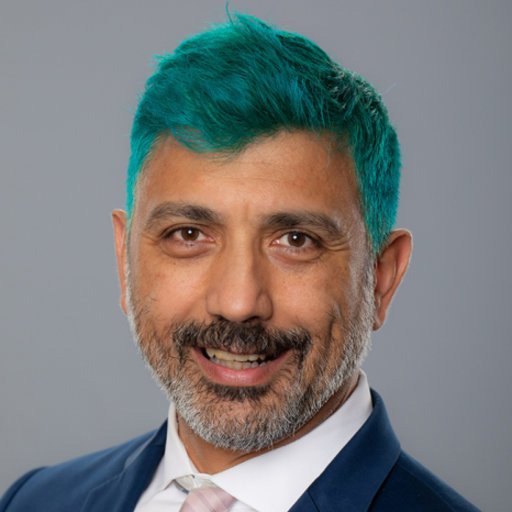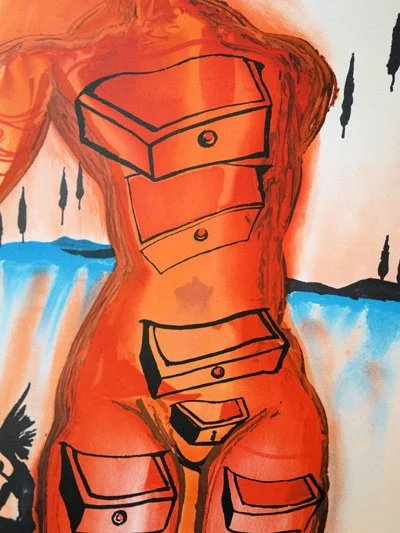On May 17/18, I was joined by special guest Dr. Michele di Pietro for a lively discussion and workshop on "Writing the Chakras."
Michele is Professor of Mathematics and the Executive Director of the Center for Excellence in Teaching and Learning at Kennesaw State University. They are a co-author of How Learning Works: Eight Research-Based Principles for Smart Teaching (2nd ed.) and have a long-standing interest in yoga, meditation, and the chakras, a sequence of bodily focal points associated with various ancient meditation practices.
In the first hour of this free WriteSPACE Special Event, Michele and I discussed how the chakras constitute a framework that can help us find our ground, nurture our desires, build our power, find the love in our professional environment, grow our voice, evolve our vision, and build our legacy. Michele talked about the energy currents that the chakras describe — ascending and descending — and how they can support the academic writing process by helping us achieve a higher consciousness or manifest our intentions.
In the second hour, we conducted a hands-on workshop for WriteSPACE members based on the "writing the chakras" theme.
Below is WriteSPACE Event Manager Amy Lewis’ first-person account of the live event.
…………….
Hearing from our wonderful special guest Michele was a privilege. I came to the special event with little knowledge of the chakras and left with a deep appreciation for the depth of this field; if we spend time focusing on each chakra’s associations and correspondences, then we can understand ourselves and our work better.
A few standout quotes from this session:
“My passion has become to help, give a voice to, collect stories from, advocate for, and represent staff and faculty.”
Yoga shows “possibilities and expansion, and it helped me build my strength physically and emotionally.”
“Looking at Dali’s Port Lligat, Venus with drawers, imagine if you could open the drawer and see what’s in someone’s heart, what’s in their gut, what’s in their mind. In some ways, the chakras are like this.”
Both Michele and Helen, as well as other scholars such as Margy Thomas (who connects academia and tarot cards), are challenging the norms and boundaries of what might constitute academic writing. These standards can make some scholars feel that they are not ‘serious enough’, not ‘academic enough’. Whereas, in fact, quite the opposite is true—alternative approaches using different philosophical systems and metaphors can be incredibly intellectual and meaningful.
Michele explained that in yoga philosophy, we have several bodies; beginning with the outer physical body and ending with the innermost body—the bliss body. The chakras operate out of the subtle (energetic) body. They are part of a philosophical (or mythical) system; they are not a religion, nor are they magic, but they can reveal important aspects of ourselves. They run down the spine, and along this channel there are seven energy points (for those interested in the physiology of the chakras, they align with clusters of nerve endings along the spine where sensitivity and receptivity are highly concentrated). Each one has a different function and a ‘demon’ or ‘trickster’ emotion that can block the energy flow.
In the second hour, Michele guided us through a workshop with some freewriting experiments to explore each chakra. I invite you to spend a few minutes freewriting on Michele’s wonderful writing prompts!
1) The ground chakra. The chakra of unity, of the physical plane, and survival. It is everything that makes up your foundation, including your physical needs, your family and home needs, your health needs. It is Saṃsāra, ‘the condition existence’, and it is plagued by the trickster of fear.
My writing stretches its roots all the way to…
2) The desire chakra. The chakra of diversity, perspective, and otherness. Through it, we find ourselves in a gravitational pull towards or away from polarities, and it can provide pleasure and abundance. It gives us the right to feel, and the demon is guilt.
I encounter the Shadow in my writing…
3) The power chakra. It is transformation and fire. The chakra of anger, will, energy, and accountability. The demon is shame, because it paralyses us from acting.
In my writing I am accountable to…
4) The heart chakra. The chakra of love, compassion, and balance. The heart is the mid-point of the system; it reconciles the lower and upper chakras. The demon of this chakra is grief because it makes the heart heavy and limits peace and openness.
I find grace in my writing as/when/if/through…
5) The throat chakra. It is the chakra of sound and the nexus of creative expression. When our thoughts and emotions are in alignment, we can speak our truth—the throat is the chakra of truth, connection, and rhythm. Through it we have the right to speak and be heard, it is threatened by the demon of lies.
The vibration of my writing feels like…
6) The head chakra, located in the third eye. Through this chakra, we can express our vision to imagine, dream and deeply understand. Our archetypal identities live here, and it is controlled by the trickster of illusion.
Which archetype do I embody when I write? (Choose from the following: The Innocent, Everyman, Hero, Outlaw, Explorer, Creator, Ruler, Magician, Lover, Caregiver, Jester, and Sage.)
7) The crown chakra, represented as the lotus flower on the top of the head. It embodies your transcendental identity, where your soul and spirit ascend. Through it, we become connected to something greater than ourselves. It is where we cultivate our legacy, and its demon is attachment.
The legacy I am building with my writing is…
Michele’s wisdom undoubtedly inspired many of us to help us reframe the way we approach our writing and understand where we are devoting our energy. A big thank you to Michele and Helen for this informative and inspirational special event and for sharing your passion and expertise so generously.
A recording of this two-part WriteSPACE Special Event — including Michele’s 7 writing prompts — is now available in the WriteSPACE Library.
Not a member? Register here to receive an email with the video link.
Better yet, join the WriteSPACE with a free 30 day trial, and access our full Library of videos and other writing resources.
Subscribe here to Helen’s Word on Substack to access the full Substack archive and receive weekly subscriber-only newsletters (USD $5/month or $50/year).
WriteSPACE members enjoy a complimentary subscription to Helen’s Word as part of their membership plan (USD $15/month or $150/year).










